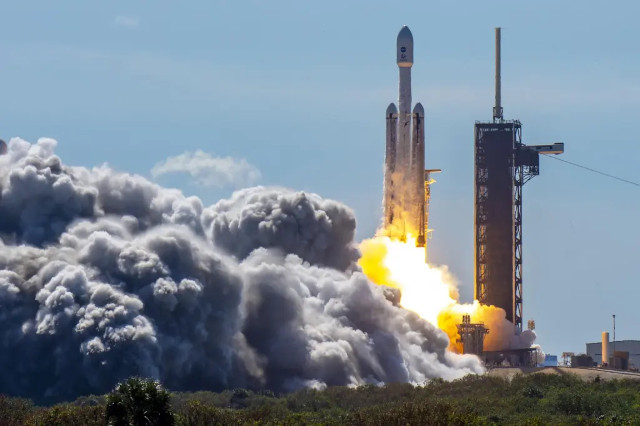
A few hours ago, NASA’s Europa Clipper space probe blasted off atop a SpaceX Falcon Heavy rocket from the Kennedy Space Center. After just over an hour, it successfully separated from the rocket’s last stage and set off on its route that will take it into deep space, to Europa, Jupiter’s moon with an icy surface that hides an ocean of liquid water to understand if it’s habitable.
The Europa Clipper mission is the result of reworkings of various proposals and economic assessments conducted after the discovery that there’s an ocean of liquid water under Europa’s icy crust. The first proposal dates back to 1997 and over the years, there have been many changes, also regarding a possible collaboration with ESA for a mission similar to Cassini-Huygens. Among the proposals there was the possible inclusion of a lander, even in a follow-up mission named Europa Lander, an idea that is not currently being followed up.
The purpose of the Europa Clipper mission is to study Europa and in particular its underground ocean, in the hope of understanding if it’s really habitable. All the surveys conducted remotely and by other space probes such as Galileo and Juno offered very interesting results but haven’t provided definitive answers.
Europa Clipper’s instruments were designed to conduct specific detections to obtain more information on the characteristics of Europa’s ocean environment. There’s also interest in what’s happening on its seabed, where it seems that there are hydrothermal vents similar to those that could have given rise to life on Earth.
The Europa Clipper space probe is now on its way to Jupiter, where it’s scheduled to arrive in about five and a half years. The journey would have lasted more or less half as long if the launch had been carried out using NASA’s Space Launch System (SLS), the only rocket in active service more powerful than the Falcon Heavy. However, problems with the availability of the SLS, also due to the precedence of the Artemis program, led to the use of SpaceX’s rocket, which nevertheless allowed for considerable savings, which someone estimated at around two billion dollars. The Falcon Heavy also ensured lower vibrations than the SLS.
For these reasons, Europa Clipper is scheduled to reach Jupiter in April 2030 to conduct a very ambitious mission. It’s the most massive spacecraft built by NASA to date and it was necessary to use all the fuel from the three first stages of the Falcon Heavy rocket to give it the maximum possible push into deep space. As a result, no first stage landed, an unusual situation given that their landing is now part of the routine of SpaceX launches.
With its colossal solar panels deployed, the Europa Clipper spacecraft reaches a length of about 30 meters. All the solar energy captured will be needed to power the instruments that will be used to examine Europa and try to establish if it’s habitable. The hope is to find extraterrestrial life forms but there are still many questions that Europa Clipper could finally answer.


